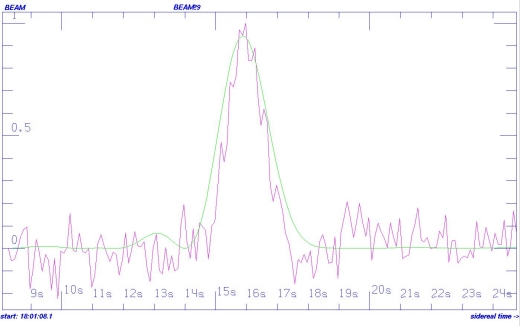The RATAN-600 radio telescope in the Russian Republic of Karachay–Cherkessia has picked up an unusual signal from a star, HD164595, located about 94 light-years away from Earth in the constellation, Hercules.

The RATAN-600 radio telescope.
The international team of researchers, led by N.N. Brusilov, first detected the signal on May 15, 2015, and will present their findings at next month’s meeting of the IAA SETI Permanent Committee.
They believe scientists should shift their attention to the target.
Significantly, HD164595 is almost identical in size, age, and metallicity to our own Sun, and it hosts at least one known planet, a “warm Neptune,” on a circular orbit.

This strong radio signal was detected in the direction of HD 164595 on May 15, 2015. (Image: Bursov et al.)
Disclaimer time.
“No one is claiming that this is the work of an extraterrestrial civilization,” Paul Gilster wrote on Centauri Dreams but, you know, in the event that it is—researchers say that only a Kardashev Type II civilization (i.e., an alien species capable of tapping into 100 percent of its host star’s energy potential) could produce an isotropic beacon signal. (A narrow beam focused on our Solar System would, on the other hand, be the result of a Kardashev Type I civilization, or an alien species capable of exploiting all of its planet’s energy potential.)
And then, of course, there’s the chance that the signal is nothing at all—the result, for example, of some naturally occurring cosmic anomaly like “the possible microlensing of a background source.”
Given such ambiguity (background noise or alien super-race?), researchers are urging scientists to focus their radio dishes in the direction of this curious planetary system and pursue further study.




